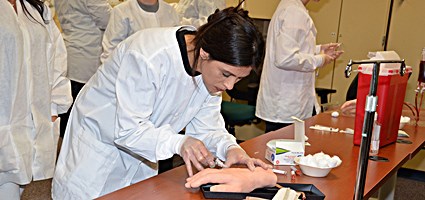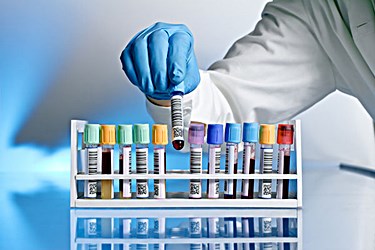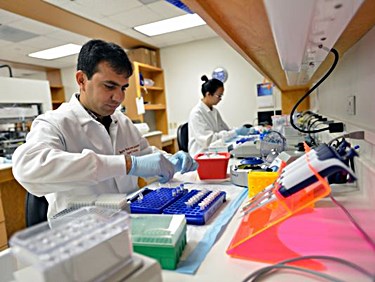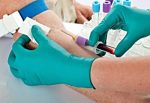Because phlebotomists are in higher demand across the country than ever before, there are consequently more people applying for phlebotomy jobs than ever before. While it is considered to be an entry-level job, there can sometimes be more to it than most people may originally think, including training courses, and certification. This can leave a lot of people who want to be phlebotomists wondering how to get a phlebotomy license.
Getting started doesn’t have to be an overwhelming experience. In fact, the training required to get your license can not only lead you toward a great career but may be easier than you think to accomplish when compared to other entry-level job training.
So, how can you start on the journey toward getting a phlebotomy license?
Understanding American State Requirements
There are six accredited national phlebotomy certification agencies, and in most cases, one of them will be suitable for achieving your final certification/license. However, several individual states have their own requirements and their own specific certification agencies that you must go through to become a certified phlebotomist in that particular state.
Be sure to do your research on what your state requires to qualify. Some states don’t even require certification, although that’s becoming rarer and rarer since the overall value of licensing is becoming more apparent due to the additional education and training it requires. Even if your state doesn’t require you to have a full license, choosing to get one regardless will only help your career in the long run.
Phlebotomy Training Programs
You’ll have to go through a training school of some kind – these can either be done in a classroom setting, or even online. A quick search in your area will likely find you a few places to choose from to get this training. Sometimes hospitals and clinics will offer it, and sometimes community colleges, etc. will offer it. Wherever you decide to go for your phlebotomy training, make sure it is an accredited program.
If you choose to do your training online, it’s even more important to make sure you’re going through a trustworthy, respectable program. Because of phlebotomy popularity, there are plenty of ‘scam’ websites that make training promises they simply cannot keep, and they may not be able to give you the certification you need to get hired eventually. It’s also important to make sure you’re using an online program that somehow can connect you to working in the field, and getting a certain amount of clinical work in, as well.
Once you’ve decided on a location for your training program, it’s important to know what to expect. Most training courses will last anywhere from four to eight months (no more than a year, at most), and will cover a variety of necessary topics that you’ll use on a daily basis.
From a classroom standpoint, a phlebotomist in training will learn all aspects of human anatomy, including the respiratory system, circulatory system, and nervous system. Since as a phlebotomist, your main job is drawing blood, it’s important to know as much about the body as possible.
Secondly, training covers standard procedures for phlebotomists, including how to interact with patients, knowing how to label blood samples properly, and how to work in a medical lab.
Finally, standard phlebotomy training will be ‘in the field.’ After all, it’s extremely important to know how to draw blood safely, effectively, and efficiently. Many training programs require you to perform a certain amount of venipunctures before you can complete the actual course.
Venipuncture is simply the act of drawing blood and working underneath a supervisor. You will have to perform successful blood draws on your fellow phlebotomy students a designated amount of times before you can even consider working on patients.
How to Get a Phlebotomy License
Once you’ve completed a training program, it’s up to you to go the ‘extra mile’ and go for your certification. Again, this isn’t required in all states, but there’s a good chance that could change, and having your license in phlebotomy is a good way to ensure you’ll be one step ahead of your competition in a job field that is becoming increasingly competitive.

Getting your license will take another one to two months, and typically requires the completion of a test to officially become certified. You must pass this test with a score of 70% or higher. What is important to consider at this stage is what type of license you’d like to have.
There are different levels of phlebotomy certification, and while all are important, which level you reach for will depend on how far you’d like your career to go in the phlebotomy field. Again, a phlebotomist is considered an entry-level job, but that certainly doesn’t mean it has to stay that way. Many people spend an entire career in phlebotomy, but that tends to mean there will be some shifting and growing throughout the years, requiring different levels of licensing. Let’s take a closer look at the types of certification needed for each level.
Limited Phlebotomy Technician
If you choose to become a limited phlebotomy technician, you will only be allowed to perform skin punctures to retrieve blood. You will have to complete the standard phlebotomy training courses, but you can apply for certification as a limited technician. With this in mind, your ‘hands-on’ training could potentially require a lot less of your time and experience.
This can be a convenient solution for someone looking to cut down on training time and start a job faster, but it also comes with fewer responsibilities, and as a result, you’re likely to receive less working hours, less pay, etc. However, this can also be viewed as a temporary position as you continue your training and education.

Phlebotomy Technician
As a standard phlebotomy technician, you will be authorized to do both skin punctures and venipuncture. To become a phlebotomy technician, you need to complete 40 hours of classroom training, and 40 hours of hands-on clinical training. You can apply for certification and will need to complete and pass a written exam given by your certification site.
This is the most common form of certification by a student who has just completed a phlebotomy training program. While you may be under supervision for a set amount of time wherever you happen to get hired, after receiving this licensing, you are a full-fledged phlebotomist.
Phlebotomy Technician II
To obtain a license to be a phlebotomy technician II, you must currently be a licensed phlebotomist with over 1040 hours of hands-on experience. This can be a great opportunity for those desiring to grow their career.
Continued Training & Education
As a phlebotomist, it is required that you keep your license up to date, and this requires a bit of ‘upkeep.’ Additional training, refresher courses, and supervisory work is needed on a regular basis to keep your license and certification relevant. However, a phlebotomy license is also often used as a springboard to further education and growth within the medical field.

Completing a training course is certainly an accomplishment, but those who go on to receive their license show a passion for what they do, and many certified phlebotomists start out in the medical field in an entry-level position, hoping to continue their education and move into a higher position.
Even if it remains your sole career, getting licensed, and maintaining that license, can help you to reach the highest heights within the field itself. There are plenty of supervisory positions in the profession, and through experience is certainly a factor, preference is always given to those phlebotomists who have taken the time to become licensed, and continue their training constantly to keep that license fresh and relevant.
Making the Most Of Your Phlebotomy License
Again, it is a booming career choice, thanks to advancements in medical technology that have opened up a need like never before. When it comes to getting a job, you can look everywhere from hospitals to clinics, or even private practices and nursing homes. There are multiple opportunities for talented phlebotomists out there, but having your license can take you even farther.
When it comes to how to get your phlebotomy license, the simplest thing to do is start researching. Find local centers near you that can offer training, and eventually, training for certification in the field. In less than a year, you could be a fully-licensed phlebotomist, ready for a rewarding career in the medical field for years to come.
If you’re looking for careers that are similar to phlebotomy, you can find out your options in this post.






